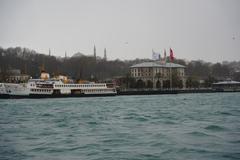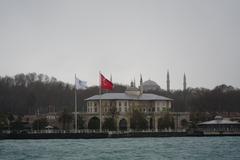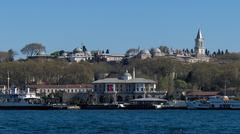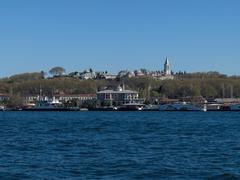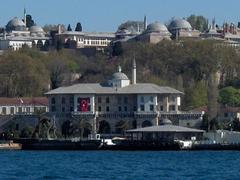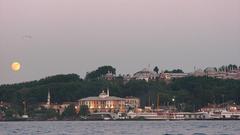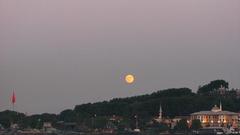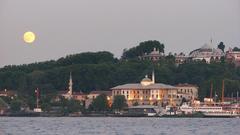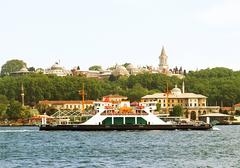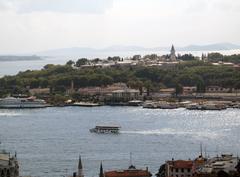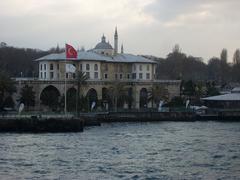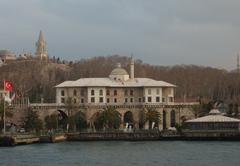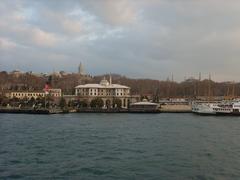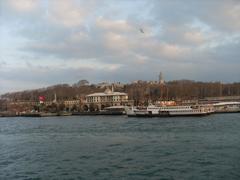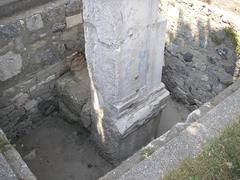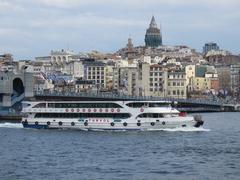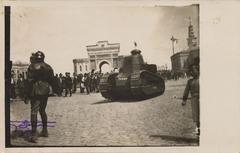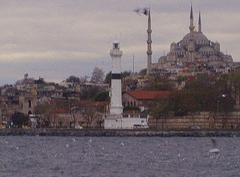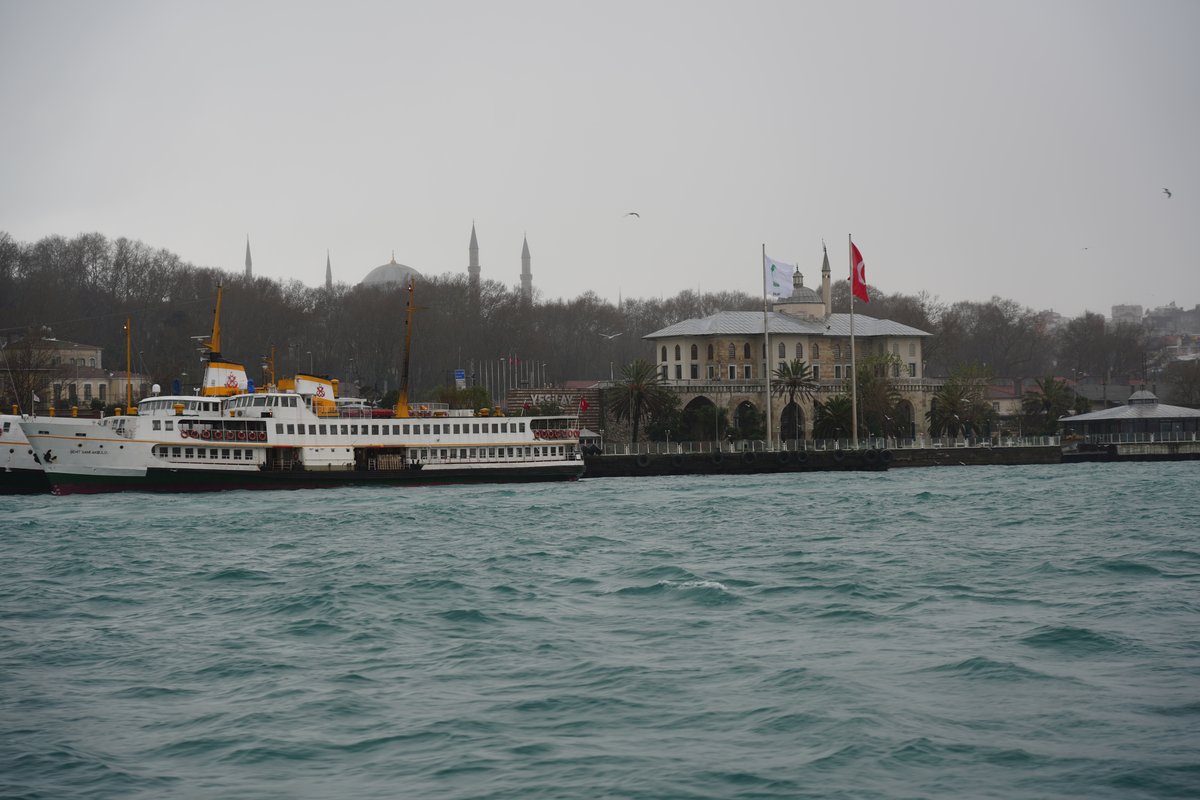
Comprehensive Guide to Visiting Kennedy Caddesi, Istanbul, Türkiye
Date: 19/07/2024
Introduction
Kennedy Caddesi, often referred to as Kennedy Avenue, is a pivotal thoroughfare that offers a unique blend of historical, cultural, and modern experiences in Istanbul, Türkiye. Named after the 35th President of the United States, John F. Kennedy, this iconic avenue stretches along the southern coast of Istanbul’s European side, parallel to the Sea of Marmara. Kennedy Caddesi is a testament to Istanbul’s rich history, evolving from an ancient coastal path used during the Byzantine era to a bustling modern avenue that connects various parts of the city (Hurriyet Daily News). The avenue has witnessed significant historical events, including the construction of the Theodosian Walls in the 5th century and the Ottoman expansion post-1453 conquest (Istanbul Clues). Today, it is lined with an array of landmarks such as the Topkapi Palace, Hagia Sophia, and Gülhane Park, each narrating a unique story of Istanbul’s past and present (Istanbul Guide). Whether you’re a history buff, a culture enthusiast, or simply looking for a scenic walk, Kennedy Caddesi offers something for everyone. This comprehensive guide aims to provide all the necessary information to make your visit unforgettable.
Table of Contents
- Introduction
- Historical Background of Kennedy Caddesi
- Visiting Information
- Must-See Attractions and Historical Sites Along Kennedy Caddesi
- FAQ
- Conclusion
- References
Historical Background of Kennedy Caddesi
Origins and Early Development
Kennedy Caddesi’s origins can be traced back to the Byzantine era when the area was part of the ancient city walls of Constantinople. The road was initially a coastal path used for defense and trade purposes, connecting various parts of the city.
Byzantine and Ottoman Influence
During the Byzantine period, the area around Kennedy Caddesi was crucial for the defense of Constantinople. The Theodosian Walls, constructed in the 5th century, ran parallel to the modern-day avenue. The remnants of these walls can still be seen today, providing a glimpse into the city’s ancient past (Istanbul Clues).
With the Ottoman conquest of Constantinople in 1453, the area underwent significant changes. The Ottomans expanded the city’s infrastructure, and the coastal road became an essential route for trade and transportation. The road facilitated the movement of goods and people between the city’s ports and the inland areas. The Ottomans also built several important structures along the route, including mosques, palaces, and public baths, many of which still stand today (Istanbul Guide).
Modernization and Naming
The transformation of the coastal road into a modern avenue began in the early 20th century. With the establishment of the Republic of Turkey in 1923, there was a push for modernization and urban development. The road was widened and paved, and new buildings were constructed along its length. In the 1960s, the avenue was named after John F. Kennedy, the 35th President of the United States, as a symbol of Turkish-American friendship (Hurriyet Daily News).
Architectural and Cultural Significance
Kennedy Caddesi is lined with a mix of historical and modern buildings, reflecting Istanbul’s rich architectural heritage. Notable landmarks include the Topkapi Palace, the former residence of Ottoman sultans, and the Hagia Sophia, a masterpiece of Byzantine architecture that has served as a cathedral, mosque, and museum (Topkapi Palace, Hagia Sophia). The avenue also features several parks and recreational areas, such as Gülhane Park, which was once part of the Topkapi Palace grounds. Today, it is a popular spot for both locals and tourists, offering a peaceful retreat from the bustling city (Gülhane Park).
Historical Events and Milestones
Kennedy Caddesi has witnessed numerous historical events that have shaped Istanbul’s history. One of the most significant events was the construction of the Marmaray Tunnel, an underwater railway tunnel that connects the European and Asian sides of Istanbul. The tunnel, which opened in 2013, runs parallel to Kennedy Caddesi and has greatly improved transportation in the city (Marmaray Project). Another notable event was the 1999 İzmit earthquake, which caused significant damage to the infrastructure along Kennedy Caddesi. The earthquake highlighted the need for improved building standards and disaster preparedness in Istanbul. In the years following the earthquake, extensive efforts were made to reinforce and modernize the buildings along the avenue (Istanbul Earthquake).
Visiting Information
Visiting Hours and Tickets
While Kennedy Caddesi itself is a public road and accessible 24/7, many of the historical landmarks and attractions along the avenue have specific visiting hours and may require tickets. For example, Topkapi Palace is open from 9:00 AM to 5:00 PM, and tickets can be purchased online or at the entrance (Topkapi Palace Tickets). It is advisable to check the official websites of the attractions you plan to visit for the most up-to-date information on visiting hours and ticket prices.
Travel Tips and Nearby Attractions
When visiting Kennedy Caddesi, it’s essential to wear comfortable walking shoes as there is much to explore on foot. Bringing a camera is also highly recommended to capture the stunning views of the Sea of Marmara and the historical landmarks. Nearby attractions worth visiting include the Blue Mosque, Grand Bazaar, and the Basilica Cistern, all within easy reach of Kennedy Caddesi.
Accessibility and Safety
Kennedy Caddesi is well-connected by public transportation, with numerous bus and tram lines running along its length. The avenue is also accessible for walking and cycling, with dedicated pathways for pedestrians and cyclists. While the area is generally safe, it is always wise to stay vigilant and be aware of your surroundings, especially in crowded places.
Special Events and Guided Tours
Throughout the year, Kennedy Caddesi hosts various cultural events, festivals, and parades that celebrate Istanbul’s rich heritage. Joining a guided tour is an excellent way to learn more about the history and significance of the landmarks along Kennedy Caddesi. Many tour operators offer walking tours that cover the main attractions and provide in-depth insights into the area’s history.
Must-See Attractions and Historical Sites Along Kennedy Caddesi
Sultanahmet District
One of the most significant attractions along Kennedy Caddesi is the Sultanahmet District, home to some of Istanbul’s most iconic landmarks. The Hagia Sophia, originally constructed as a cathedral in 537 AD, later converted into a mosque, and now a museum, stands as a symbol of Byzantine and Ottoman architectural prowess. Visit during its opening hours from 9:00 AM to 7:00 PM (ticket price: 72 TL). Nearby, the Blue Mosque, known for its stunning blue tiles and six minarets, offers a glimpse into the grandeur of Ottoman religious architecture. It is open from 8:30 AM to 5:00 PM, and admission is free.
Topkapi Palace
A short distance from Kennedy Caddesi, the Topkapi Palace, once the primary residence of the Ottoman Sultans, now serves as a museum showcasing imperial collections, including the Prophet Muhammad’s cloak and sword. Open from 9:00 AM to 6:00 PM (ticket price: 100 TL), the palace’s strategic location offers panoramic views of the Bosphorus and the Golden Horn.
Archaeological Museums
Adjacent to the Topkapi Palace, the Istanbul Archaeological Museums comprise three museums: the Archaeological Museum, the Museum of the Ancient Orient, and the Museum of Islamic Art. These museums house over a million artifacts from various civilizations, including the famous Alexander Sarcophagus and the Treaty of Kadesh. Open from 9:00 AM to 5:00 PM (ticket price: 50 TL).
Gülhane Park
Gülhane Park, located near the Topkapi Palace, is one of Istanbul’s oldest and most expansive parks. Originally part of the palace grounds, the park now serves as a public space where visitors can enjoy lush gardens, historical monuments, and the Museum of the History of Science and Technology in Islam. The park is open from sunrise to sunset and is free to enter.
Yenikapı Ferry Terminal
The Yenikapı Ferry Terminal is a crucial transportation hub along Kennedy Caddesi, offering ferry services to various destinations across the Sea of Marmara. The terminal is also home to the Yenikapı Archaeological Site, where excavations have uncovered ancient Byzantine harbor remains, including shipwrecks and artifacts dating back to the 4th century.
Little Hagia Sophia
The Little Hagia Sophia, originally known as the Church of Saints Sergius and Bacchus, is another notable attraction near Kennedy Caddesi. This 6th-century church, now a mosque, is renowned for its architectural similarities to the Hagia Sophia and its intricate mosaics and marble decorations. It is open from 9:00 AM to 6:00 PM, and entrance is free.
Marmara University Rectorate Building
The Marmara University Rectorate Building is an architectural gem along Kennedy Caddesi. This historic building, originally constructed as a military hospital in the 19th century, now serves as the administrative headquarters of Marmara University. Its neoclassical design and well-preserved interiors make it a point of interest for architecture enthusiasts.
Atatürk Cultural Center
The Atatürk Cultural Center, located near Taksim Square, is a prominent cultural venue that hosts various performances, including opera, ballet, and theater. Although not directly on Kennedy Caddesi, its proximity makes it easily accessible for visitors exploring the area. The center’s modernist architecture and cultural significance make it a key attraction.
Sea of Marmara Views
One of the most appealing aspects of Kennedy Caddesi is its stunning views of the Sea of Marmara. The coastal road offers numerous spots where visitors can stop and enjoy the sea breeze, watch the ships pass by, and take in the picturesque sunsets. The Bakırköy Marina is a popular spot for such activities, providing a tranquil setting for relaxation and leisure.
Florya Atatürk Marine Mansion
Further along Kennedy Caddesi, the Florya Atatürk Marine Mansion offers a glimpse into the life of Mustafa Kemal Atatürk, the founder of modern Turkey. This seaside mansion, where Atatürk spent his summers, is now a museum showcasing his personal belongings and providing insights into his life and legacy. Open from 9:00 AM to 5:00 PM (ticket price: 20 TL).
Istanbul Aquarium
The Istanbul Aquarium in Florya is another major attraction along Kennedy Caddesi. As one of the largest thematic aquariums in the world, it features a wide variety of marine life from different regions, interactive exhibits, and a 5D cinema. Open from 10:00 AM to 8:00 PM (ticket price: 100 TL), the aquarium is a family-friendly destination that offers both educational and entertaining experiences.
Bakırköy District
The Bakırköy District, located along Kennedy Caddesi, is a vibrant area known for its shopping centers, cafes, and cultural venues. The Carousel Shopping Center and the Capacity Shopping Center are popular destinations for both locals and tourists, offering a wide range of retail and dining options.
FAQ
Q: What are the best times to visit Kennedy Caddesi? A: The best times to visit Kennedy Caddesi are during the spring and fall when the weather is mild and pleasant. Early mornings and late afternoons are ideal for avoiding the crowds and enjoying a leisurely stroll along the avenue.
Q: Are there dining options available along Kennedy Caddesi? A: Yes, there are numerous dining options along Kennedy Caddesi, ranging from traditional Turkish eateries to international restaurants. You can find a variety of cuisines to suit your taste and budget.
Q: Is Kennedy Caddesi suitable for families with children? A: Absolutely! Kennedy Caddesi is family-friendly, with several parks and open spaces where children can play. Gülhane Park, in particular, is a great spot for families to relax and enjoy a picnic.
Q: Can I take public transportation to Kennedy Caddesi? A: Yes, Kennedy Caddesi is easily accessible by public transportation. Numerous bus and tram lines run along the avenue, making it convenient to reach from various parts of Istanbul.
Conclusion
Kennedy Caddesi stands as a vibrant testament to Istanbul’s rich tapestry of history, culture, and modernity. From its origins as a Byzantine coastal path to its current status as a bustling avenue named in honor of John F. Kennedy, the road has played a significant role in shaping the city’s landscape (Hurriyet Daily News). The avenue encapsulates a diverse range of attractions, from architectural marvels like the Hagia Sophia and Topkapi Palace to cultural hubs such as the Istanbul Modern and the Atatürk Cultural Center (Istanbul Guide). Visitors can enjoy numerous parks, historical sites, and a variety of culinary delights that reflect the rich gastronomic heritage of Istanbul. The strategic location and well-connected public transportation make it accessible for all kinds of travelers, ensuring a convenient and enriching experience. Whether you’re exploring the historical landmarks, attending cultural festivals, or simply savoring the scenic views of the Sea of Marmara, Kennedy Caddesi offers a unique glimpse into the essence of Istanbul. For more updates and travel tips, follow us on social media or download our mobile app!
References
- Hurriyet Daily News, 2023, Author source url
- Istanbul Clues, 2023, Author source url
- Istanbul Guide, 2023, Author source url
